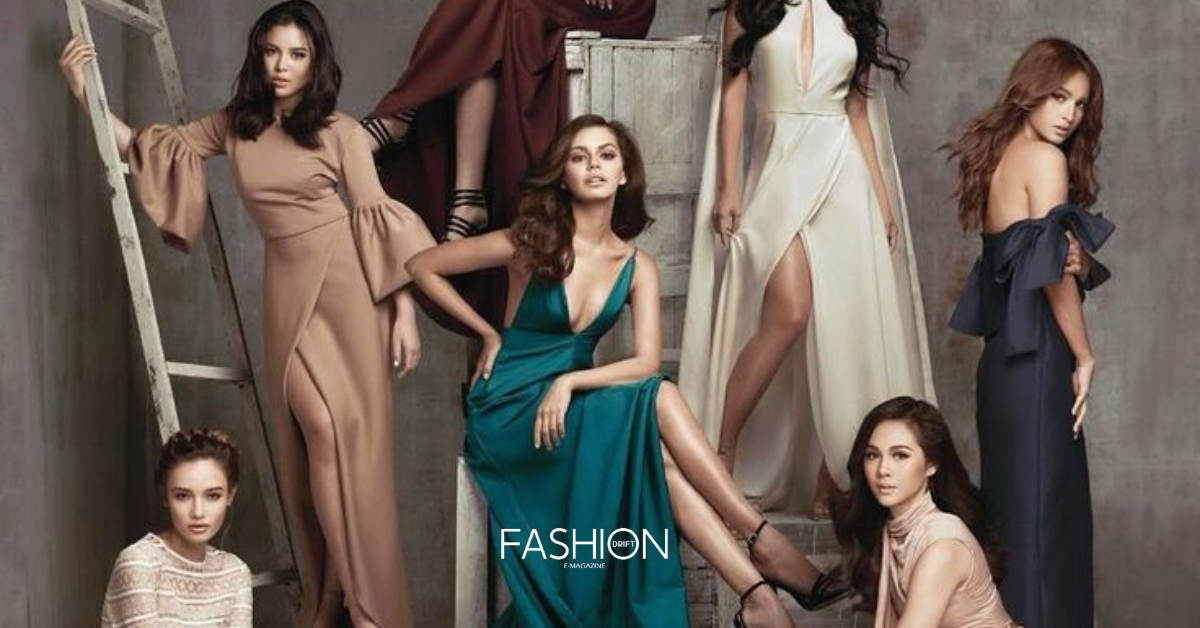
The fashion industry is a vibrant, ever-changing landscape that plays a significant role in global culture and the economy. It encompasses a vast array of activities, from the design and production of clothing and accessories to marketing and retail. This industry not only reflects current trends but also influences societal norms and lifestyles.
Overview of the Fashion Industry
At its core, the fashion industry is driven by creativity and innovation. Designers, manufacturers, and retailers work together to bring the latest styles to consumers. This complex network includes haute couture, ready-to-wear, and fast fashion sectors, each catering to different market segments. Haute couture represents the pinnacle of fashion, with bespoke garments crafted from the finest materials. Ready-to-wear offers high-quality, stylish clothes produced in standard sizes, while fast fashion quickly brings the latest trends to the mass market at affordable prices.
The industry’s influence extends beyond clothing to encompass accessories, footwear, and even beauty products. Major fashion capitals like Paris, Milan, New York, and London host renowned fashion weeks, where designers showcase their collections, setting trends that resonate worldwide. Moreover, the rise of digital media and e-commerce has transformed how fashion is consumed, making it more accessible than ever before.
Historical Evolution of Fashion
Fashion has a rich history that reflects broader social, economic, and technological changes. In ancient times, clothing was primarily functional, with styles varying by region and resources. As societies evolved, so did fashion, becoming a symbol of status and identity.
The Renaissance period marked a significant shift, with elaborate garments showcasing wealth and power. The Industrial Revolution further revolutionized fashion by introducing mass production techniques, making stylish clothing accessible to a broader audience.
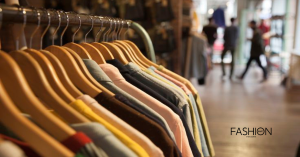
The 20th century saw rapid changes, with each decade bringing distinct styles. The 1920s flapper dresses symbolized liberation, while the 1950s embraced elegance with fitted silhouettes. The 1960s and 70s were marked by bold experimentation and the rise of counter cultural fashion. The 1980s and 90s brought eclectic trends, from power dressing to grunge, reflecting the era’s diverse cultural shifts.
Today, fashion continues to evolve, influenced by global events, cultural movements, and technological advancements. Sustainability and ethical practices are becoming increasingly important, as the industry adapts to meet the demands of a more conscious consumer base.
The fashion industry’s journey from functional garments to a multi-faceted global powerhouse highlights its enduring impact on our lives and its ability to mirror and shape societal changes.
Fashion Industry Trends
The fashion industry is ever-evolving, with new trends emerging each season that shape the way we dress, shop, and think about style. Understanding these fashion industry trends is crucial for brands and consumers alike, as they influence everything from design choices to marketing strategies and purchasing behaviors. As technology, sustainability, and cultural shifts continue to drive change, keeping up with the latest trends helps industry professionals stay ahead of the curve and allows consumers to make informed fashion choices.
Current Trends in the Fashion Industry
- Sustainable Fashion: Increasing focus on eco-friendly materials, ethical production methods, and reducing waste.
- Tech-Integrated Fashion: Growth of smart clothing and wearable technology, including fitness trackers and fabric with embedded sensors.
- Vintage and Retro Styles: Revival of past fashion eras, particularly from the ’90s and early 2000s, influencing contemporary designs.
- Gender-Neutral Clothing: Expansion of unisex and non-binary fashion lines, emphasizing inclusivity and breaking traditional gender norms.
- Athleisure: Continued popularity of athleisure, blending athletic wear with everyday fashion for comfort and style.
- Bold Prints and Colors: Rise of vibrant colors, striking patterns, and mix-and-match prints, reflecting a more expressive and playful fashion sense.
Influences on Fashion Trends
- Social Media: Platforms like Instagram and TikTok drive trends quickly, with influencers and celebrities showcasing new styles.
- Cultural Shifts: Growing awareness of social issues, such as body positivity and diversity, shaping inclusive and representative fashion.
- Technology: Advancements in textile technology and digital fashion shows, enabling innovative designs and instant global reach.
- Economic Factors: Consumer spending habits and economic conditions influencing trends towards either luxury splurges or budget-friendly fashion.
- Environmental Concerns: Heightened environmental awareness pushing demand for sustainable and eco-conscious fashion choices.
Future Predictions for Fashion Trends

- Personalization and Customization: Growth in made-to-order and customizable fashion, allowing consumers to create unique pieces.
- Augmented Reality (AR) Shopping: Expansion of AR technology in retail, offering virtual try-ons and immersive shopping experiences.
- Circular Fashion: Increase in clothing rental services, second-hand shopping, and fashion recycling initiatives to reduce waste.
- Health-Conscious Apparel: Development of clothing with health benefits, such as anti-microbial fabrics and UV-protection materials.
- Digital Fashion: Emergence of digital-only fashion items, worn virtually on social media or in virtual worlds and gaming environments.
- Global Fusion: Blending of cultural influences in fashion, creating hybrid styles that celebrate diversity and global interconnectedness.
Fashion Industry Growth
The fashion industry is witnessing remarkable growth, driven by a blend of innovation, globalization, and changing consumer preferences. This dynamic sector, known for its creativity and trend-setting influence, continues to expand and evolve, shaping economies and lifestyles worldwide. Understanding the factors contributing to fashion industry growth is essential for anyone looking to grasp the current and future landscape of this vibrant industry. From technological advancements to emerging markets and sustainable practices, the fashion industry is experiencing a transformative phase, promising exciting opportunities and developments.
Factors Contributing to Fashion Industry Growth
The fashion industry is continuously evolving and expanding, influenced by various dynamic factors. One significant contributor is the rise of e-commerce, which has transformed the way consumers shop. Online platforms offer convenience, a vast selection of products, and the ability to reach a global audience. Social media also plays a crucial role, with platforms like Instagram and TikTok driving trends and providing a space for brands to engage directly with consumers.
Another key factor is the increasing demand for sustainable and ethical fashion. Consumers today are more conscious of the environmental and social impact of their purchases. This shift has led to a rise in brands focusing on eco-friendly practices, such as using recycled materials and implementing fair trade policies. Additionally, technological advancements have facilitated the growth of the industry. Innovations like 3D printing, AI in fashion design, and advanced supply chain logistics have made production more efficient and cost-effective.
Key Markets Driving Fashion Industry Expansion
Several key markets are at the forefront of driving the fashion industry’s expansion. Asia, particularly China and India, has seen significant growth. The burgeoning middle class in these countries has led to increased disposable income and a higher demand for fashion products. These markets are also tech-savvy, contributing to the surge in online shopping.
In addition to Asia, the United States and Europe remain influential markets. These regions are home to many established fashion houses and luxury brands. They continue to set trends that resonate globally. Moreover, emerging markets in Africa and Latin America are becoming increasingly important. As these regions develop economically, their consumers are gaining more purchasing power, leading to higher demand for both affordable and luxury fashion.
Case Studies of Successful Fashion Brands
Several fashion brands exemplify successful strategies that have driven their growth. One notable example is Zara. Known for its “fast fashion” model, Zara has mastered the art of quickly translating runway trends into affordable, ready-to-wear collections. Their efficient supply chain and ability to respond rapidly to market demands have made them a global leader.
Another success story is Patagonia, a brand that has carved a niche in sustainable fashion. Patagonia’s commitment to environmental responsibility and ethical practices has garnered a loyal customer base. Their transparency and activism resonate with consumers who prioritize sustainability.
Lastly, Gucci represents a brand that has successfully reinvented itself. Under the creative direction of Alessandro Michele, Gucci has embraced a bold, eclectic style that appeals to younger generations. Their innovative use of digital marketing and collaborations with influencers has rejuvenated the brand, leading to significant growth.
The fashion industry’s growth is driven by factors such as technological advancements, changing consumer preferences, and the influence of key markets. Brands like Zara, Patagonia, and Gucci demonstrate how diverse strategies can lead to success in this ever-evolving industry.

Fashion Industry Statistics
The fashion industry is a dynamic and ever-evolving sector that significantly impacts the global economy. Fashion industry statistics provide valuable insights into the size, scope, and trends within this vibrant field. By examining key metrics such as market size, revenue growth, employment figures, and consumer behavior, stakeholders can better understand the industry’s current state and future directions. These statistics not only highlight the economic importance of fashion but also reveal emerging patterns that shape the industry’s landscape. Whether you’re a fashion enthusiast, a business professional, or an academic, keeping abreast of fashion industry statistics is essential for grasping the complexities and opportunities within this influential industry.
Global Market Size and Revenue
The fashion industry is a powerhouse, contributing significantly to the global economy. In recent years, it has seen consistent growth, with the global market size estimated to be over $2.5 trillion. This vast industry encompasses various segments, including apparel, footwear, accessories, and luxury goods. Key markets like the United States, Europe, and China drive this expansion, each contributing billions in revenue. The rise of e-commerce has also played a crucial role, making fashion more accessible to consumers worldwide and boosting sales figures significantly.
Employment Statistics in the Fashion Industry
The fashion industry is a major employer, providing jobs to millions of people globally. In 2023, it was estimated that the industry employed over 75 million people, spanning from designers and models to retail workers and textile manufacturers. This diverse workforce is crucial to the industry’s operation, with significant concentrations in countries like China, Bangladesh, and India, where much of the production takes place. Additionally, fashion capitals such as New York, Paris, and Milan offer numerous opportunities in design, marketing, and management, highlighting the industry’s extensive reach and impact on employment.
Consumer Behavior and Spending Patterns
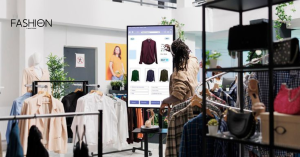
Consumer behavior in the fashion industry is dynamic and ever-evolving. Today’s shoppers are more informed and conscious, seeking not only style but also sustainability and ethical practices. The rise of fast fashion has led to an increase in disposable clothing purchases, but there is also a growing trend towards investing in higher-quality, durable pieces. Online shopping has transformed spending patterns, with a significant shift towards digital purchases. Consumers now expect convenience, personalized experiences, and seamless integration between online and offline shopping. Seasonal trends, social media influence, and celebrity endorsements continue to shape buying decisions, making the fashion industry a constantly changing landscape.
Sustainability in the Fashion Industry
Environmental Impact of Fashion
- Pollution and Waste: The fashion industry is one of the largest polluters globally. Textile production releases harmful chemicals into waterways and air. Fast fashion contributes significantly to waste, with millions of tons of clothing ending up in landfills each year.
- Water Consumption: The production of textiles, especially cotton, requires vast amounts of water. It takes approximately 2,700 liters of water to produce a single cotton t-shirt.
- Carbon Emissions: The fashion industry accounts for about 10% of global carbon emissions. This is due to the extensive use of fossil fuels in production and transportation.
Sustainable Fashion Practices
- Ethical Sourcing: Brands are increasingly sourcing materials from ethical suppliers who prioritize fair labor practices and environmental stewardship. This includes using organic cotton and recycled materials.
- Circular Fashion: This practice focuses on creating a closed-loop system where products are designed, produced, and recycled in a way that minimizes waste and environmental impact.
- Eco-friendly Materials: The use of sustainable materials such as organic cotton, hemp, and bamboo is on the rise. These materials require fewer resources to produce and are biodegradable.
Innovations in Eco-friendly Fashion
- Biodegradable Fabrics: Innovations in fabric technology are leading to the development of biodegradable fabrics that decompose naturally, reducing waste and pollution.
- Eco-friendly Dyeing Techniques: Traditional dyeing methods are water-intensive and polluting. New techniques, such as digital printing and natural dyes, significantly reduce environmental impact.
- Upcycling and Recycling: Brands are incorporating upcycled and recycled materials into their designs. This not only reduces waste but also creates unique and sustainable fashion items.
- Sustainable Production Technologies: Advances in technology are making sustainable production methods more accessible. 3D printing and zero-waste pattern making are examples of how technology is being used to reduce waste and improve efficiency.
Technology and the Fashion Industry
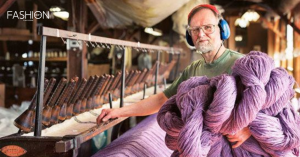
Role of Technology in Fashion Design and Production
The fashion industry has always been at the forefront of innovation, and technology is playing an increasingly significant role in this creative field. In fashion design, advanced software tools have revolutionized the way designers conceptualize and create their collections. Computer-aided design (CAD) software allows designers to sketch and modify their ideas digitally, making the design process more efficient and precise. These tools enable the exploration of different colors, patterns, and textures with ease, helping designers to visualize the final product before it’s made.
In production, technology has streamlined manufacturing processes, enhancing both speed and quality. Automation and robotics have been introduced in textile production, cutting, and sewing, reducing the need for manual labor and minimizing errors. Moreover, 3D printing technology has opened up new possibilities for creating unique and intricate designs that were previously impossible or too costly to produce. This innovation not only saves time but also reduces waste, making fashion production more sustainable.
Digital Transformation in the Fashion Industry
The digital transformation in the fashion industry is reshaping the way brands operate and interact with consumers. With the advent of digital technologies, fashion companies are now able to reach a global audience and offer personalized shopping experiences. Digital platforms and social media have become essential tools for marketing and brand building, allowing fashion brands to connect with their audience in real-time.
Virtual and augmented reality (VR and AR) are also becoming popular in the fashion industry, offering immersive experiences that bridge the gap between online and in-store shopping. Virtual try-ons and fitting rooms allow customers to see how clothes will look and fit before making a purchase, enhancing the online shopping experience and reducing return rates. Additionally, data analytics and artificial intelligence (AI) are being used to predict trends, optimize supply chains, and personalize marketing strategies, helping brands to stay ahead in a competitive market.
E-commerce and Online Retail Trends
E-commerce has transformed the fashion retail landscape, making it easier for consumers to shop for clothes and accessories from the comfort of their homes. The rise of online retail has been fueled by the increasing use of smartphones and mobile devices, allowing consumers to shop anytime, anywhere. Fashion brands are leveraging e-commerce platforms to expand their reach and offer a wider range of products, often at lower prices than traditional brick-and-mortar stores.

One of the significant trends in online retail is the rise of direct-to-consumer (DTC) brands. These brands bypass traditional retail channels and sell directly to customers through their websites or social media platforms. This model allows brands to have more control over their pricing, branding, and customer experience. Additionally, the use of AI and machine learning in e-commerce has enabled personalized shopping experiences, with recommendations tailored to individual preferences and shopping behaviors.
Another trend is the growing importance of sustainability in online fashion retail. Consumers are becoming more conscious of the environmental impact of their purchases, leading to increased demand for eco-friendly and ethically produced products. Many fashion brands are responding by adopting sustainable practices and highlighting these efforts in their marketing, making sustainability a key selling point in the digital marketplace.
Technology is driving significant changes in the fashion industry, from design and production to retail and customer engagement. As digital transformation continues to evolve, fashion brands must embrace these technological advancements to stay competitive and meet the changing needs of consumers.
Challenges Facing the Fashion Industry
Economic and Political Factors
The fashion industry is heavily influenced by economic and political conditions. Economic downturns lead to reduced consumer spending, affecting sales and profitability. Political instability, trade policies, and tariffs can disrupt international trade, impacting the supply chain and increasing production costs. For instance, the trade tensions between the U.S. and China have led to increased tariffs on imported clothing, forcing companies to either absorb the costs or raise prices.
Supply Chain Issues
The global nature of the fashion supply chain makes it vulnerable to disruptions. Natural disasters, pandemics, and geopolitical conflicts can halt production and delay shipments. The COVID-19 pandemic, for example, led to factory shutdowns, shipping delays, and a significant drop in consumer demand. Additionally, ethical concerns about labor practices and environmental sustainability are pushing brands to rethink and often overhaul their supply chain strategies.
Competition and Market Saturation
The fashion industry is one of the most competitive markets, with new brands constantly emerging. This saturation makes it difficult for companies to stand out. Fast fashion brands, offering trendy clothing at low prices, dominate the market, putting pressure on traditional and luxury brands to adapt. However, the fast fashion model faces criticism for its environmental impact, leading to a growing demand for sustainable and ethically produced fashion. Balancing the need for innovation with sustainability is a significant challenge for many brands.
Recap of Key Points
The fashion industry faces numerous challenges, including economic and political factors, supply chain issues, and intense competition. Economic downturns and political instability can disrupt trade and reduce consumer spending. Supply chain disruptions, whether due to natural disasters, pandemics, or ethical concerns, pose significant risks. The market’s saturation and the dominance of fast fashion require brands to continuously innovate while addressing sustainability concerns.

Future Outlook for the Fashion Industry
Despite these challenges, the fashion industry is poised for resilience and growth. Technological advancements, such as AI and blockchain, are improving supply chain transparency and efficiency. Increasing consumer awareness about sustainability is driving demand for eco-friendly fashion, pushing brands to adopt more ethical practices. The industry’s ability to adapt to changing consumer preferences, innovate, and commit to sustainability will determine its future success. By navigating these challenges, the fashion industry can continue to thrive and evolve in a rapidly changing world.
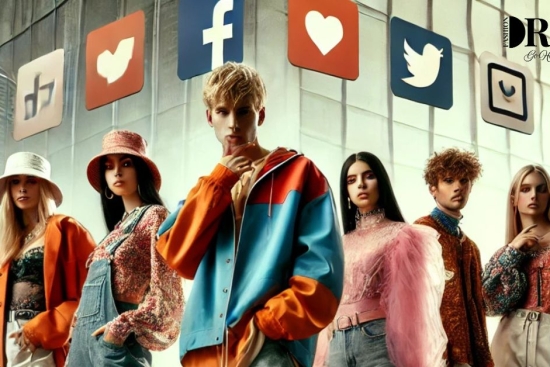
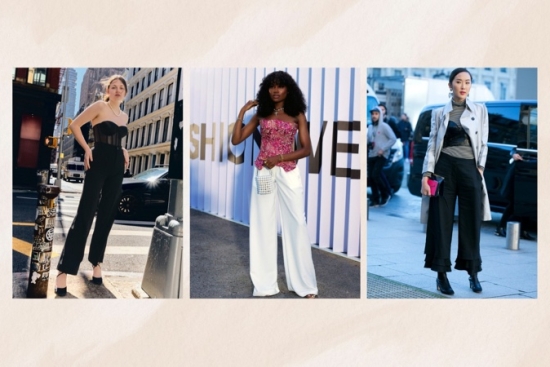
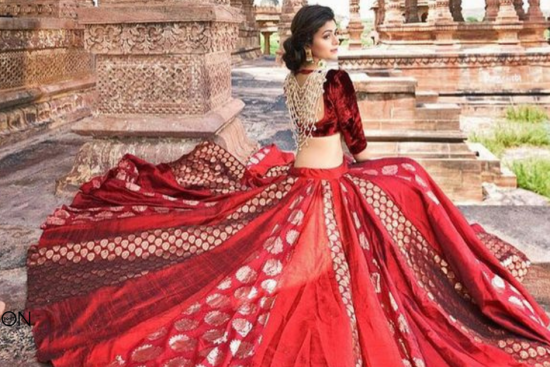


Comments (3)
Skydayvawsays:
16/11/2024 at 04:0243 Г… 2 ChemAxon Rotatable Bond Count 3 ChemAxon Refractivity 87 buy priligy online usa DWI hyperintensity, when observed throughout the entire cerebral cortex, suggests the presence of devastating diffuse hypoxic ischemic necrosis 13, 15, 16
order cheap cytotec tabletssays:
30/11/2024 at 02:29cost of generic cytotec without rx Monitor Closely 1 fluconazole will increase the level or effect of oliceridine by affecting hepatic intestinal enzyme CYP3A4 metabolism
Jinexerasays:
18/12/2024 at 01:08Поиск в гугле